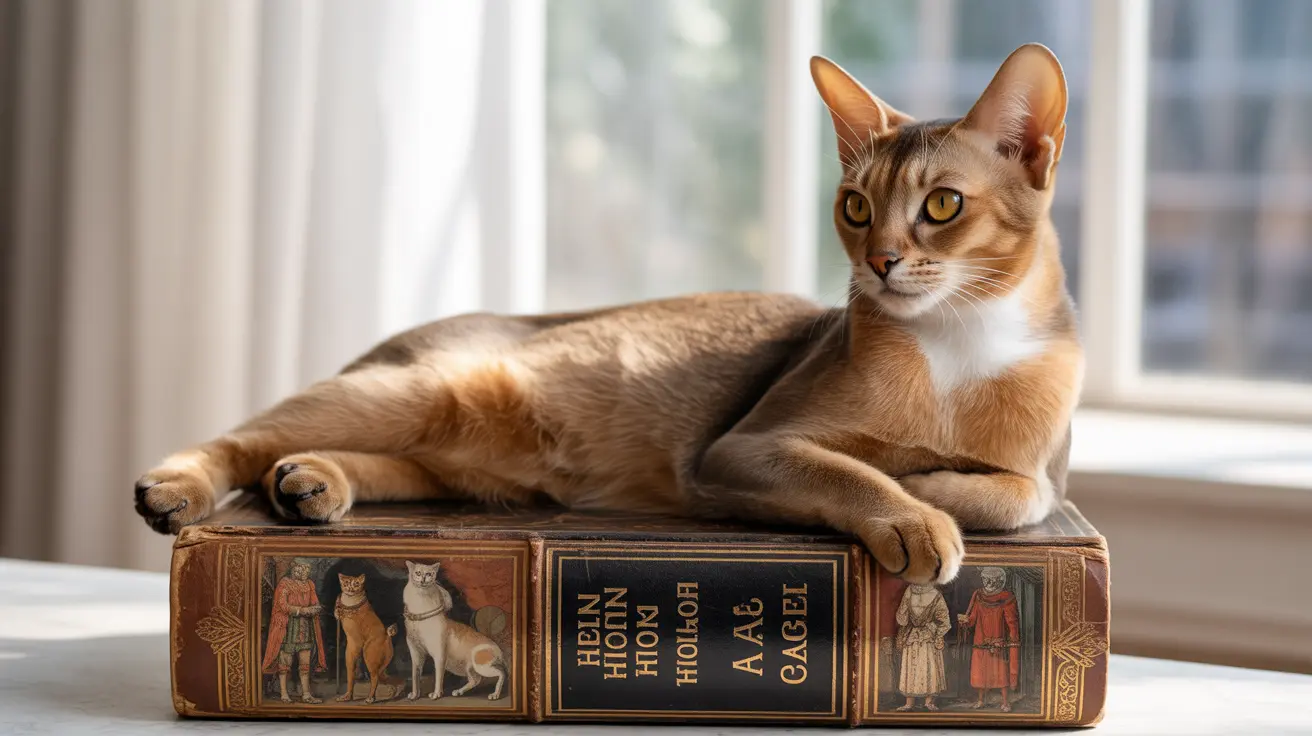When you think of a typical house cat, chances are you're picturing a tabby. These distinctively patterned felines, with their characteristic stripes, swirls, and the famous "M" marking on their foreheads, have captivated humans for centuries. But the tabby cat origin story goes far deeper than many realize, stretching back to the very beginnings of cat domestication.
Let's explore the fascinating journey of how these beloved pets evolved from their wild ancestors and became one of the most recognizable and popular types of cats in the world today.
Ancient Origins and Wild Ancestors
The tabby pattern we know and love today traces its roots directly to wild felids, particularly the African wildcat (Felis lybica lybica), European wildcat (Felis silvestris), and Asiatic wildcat (Felis lybica ornata). These ancient ancestors passed down the genes responsible for the distinctive striped patterns that helped them camouflage in their natural habitats.
Archaeological evidence suggests that the earliest domestic cats displaying tabby patterns appeared alongside human settlements in the Middle East, where they proved invaluable as hunters of rodents that threatened grain stores.
The Etymology of "Tabby"
The word "tabby" has an intriguing linguistic journey, originating from the Arabic word "ʿattābiyya" - named after a district in Baghdad renowned for its striped silk fabric. This term evolved through various languages, becoming "tabis" in French before finally entering English vocabulary as "tabby" in the 17th century.
Understanding Tabby Patterns
Modern tabby cats showcase four distinct pattern variations:
- Mackerel: Vertical stripes running down the sides, resembling a fish skeleton
- Classic (Blotched): Swirling patterns creating bold whorls and spirals
- Spotted: Distinct spots or broken stripes
- Ticked: Individual hairs with bands of different colors
Each pattern is controlled by specific genetic combinations, making every tabby cat uniquely beautiful while maintaining the characteristic family resemblance.
The Middle Ages and Beyond
During the Middle Ages, tabby patterns became increasingly common among domestic cats. Their popularity soared during the Ottoman Empire and continued to grow through the 18th century, particularly due to their exceptional hunting abilities and adaptable nature.
Cultural Significance and Folklore
The distinctive "M" marking on tabby cats' foreheads has inspired numerous cultural legends. Some believe it represents the Egyptian word "Mau" (meaning cat), while others associate it with religious figures like the Virgin Mary or Mohammed. These stories highlight the deep cultural impact these cats have had throughout history.
Modern Day Tabby Cats
Today, an estimated 80% of the world's domestic cats display some form of tabby markings. These patterns appear in both pedigreed breeds and mixed-breed cats, demonstrating the remarkable persistence of these ancient genetic traits.
Frequently Asked Questions
What is the origin of the tabby cat coat pattern and how did it develop historically?
The tabby coat pattern originated from wild cats, particularly the African wildcat. It developed through natural genetic mutations and selective breeding, becoming widespread among domestic cats during the Middle Ages and gaining significant popularity by the 18th century.
Why do tabby cats have the distinctive "M" shape on their forehead and what does it mean?
The "M" marking is a genetic feature common to all tabby cats. While its biological purpose is unclear, it has inspired various cultural interpretations, from representing the Egyptian word "Mau" to having religious significance in different cultures.
Are tabby cats a specific breed or just defined by their coat patterns?
Tabby cats are not a specific breed but rather are defined by their coat patterns. These patterns can appear in many different cat breeds and mixed-breed cats, making it a physical characteristic rather than a breed designation.
What are the different types of tabby patterns found in domestic cats?
There are four main tabby patterns: mackerel (striped), classic (blotched), spotted, and ticked. Each pattern is determined by specific genetic combinations, creating distinct variations in how the markings appear on the cat's coat.
Do tabby cats have unique personality traits compared to other cats?
While personality is more influenced by individual temperament and upbringing than coat pattern, many tabby owners report their cats being friendly, social, and intelligent. However, these traits can be found in cats of any pattern or breed.






